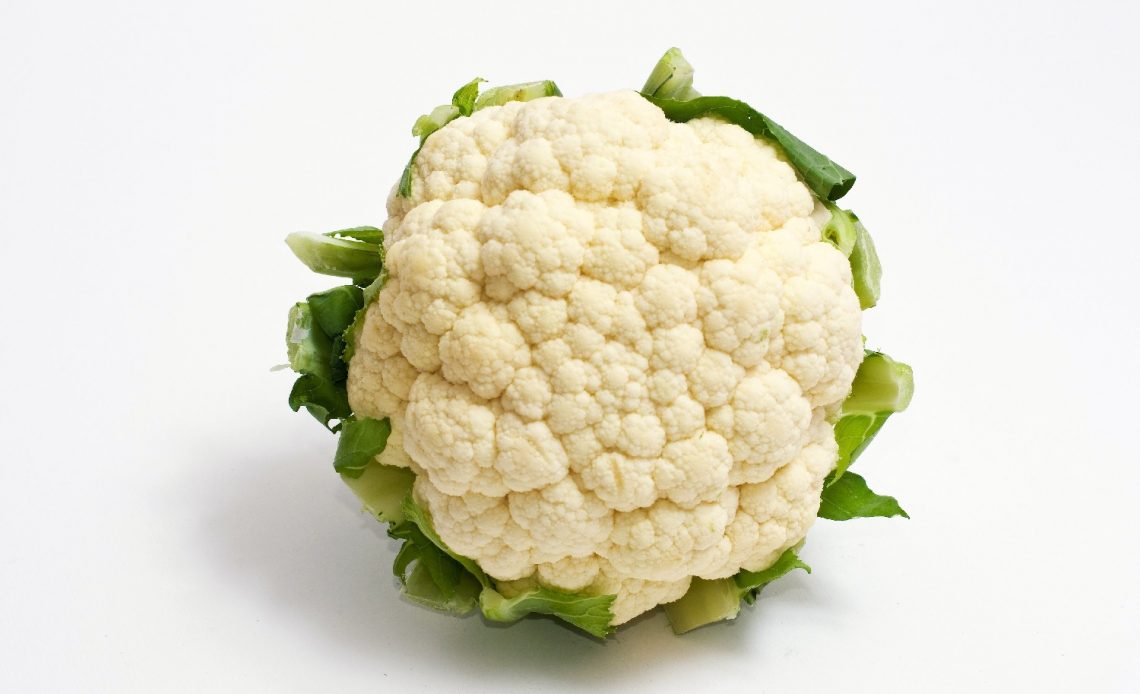

We’re here to help! Wild Yards is a completely free website that is 100% dedicated to helping you create a wildlife-friendly, sustainable yard. Read more
WildYards is reader-supported. When you buy a product through a link on our site, we may earn a comission. Every product is independently selected by our (obsessive) editors and our reviews are unbiased and objective. Read more about our mission or our privacy policy.
Most of the vegetables that we buy from supermarkets are a far cry from their ancestors. Carrots, for instance, started out as small white and purple roots that were leathery in texture and bitter to the taste. But today, they’re bright orange veggies that are crisp and refreshingly sweet. Cauliflower, too, is very unlike its progenitors. But, has cauliflower developed on its own over time, or is cauliflower man-made?
The cauliflowers that we purchase from grocery stores are, in fact, man-made. Modern cauliflowers are the result of centuries of careful hybridization to create plants that are more resistant to pests and diseases and can produce larger cauliflower heads.
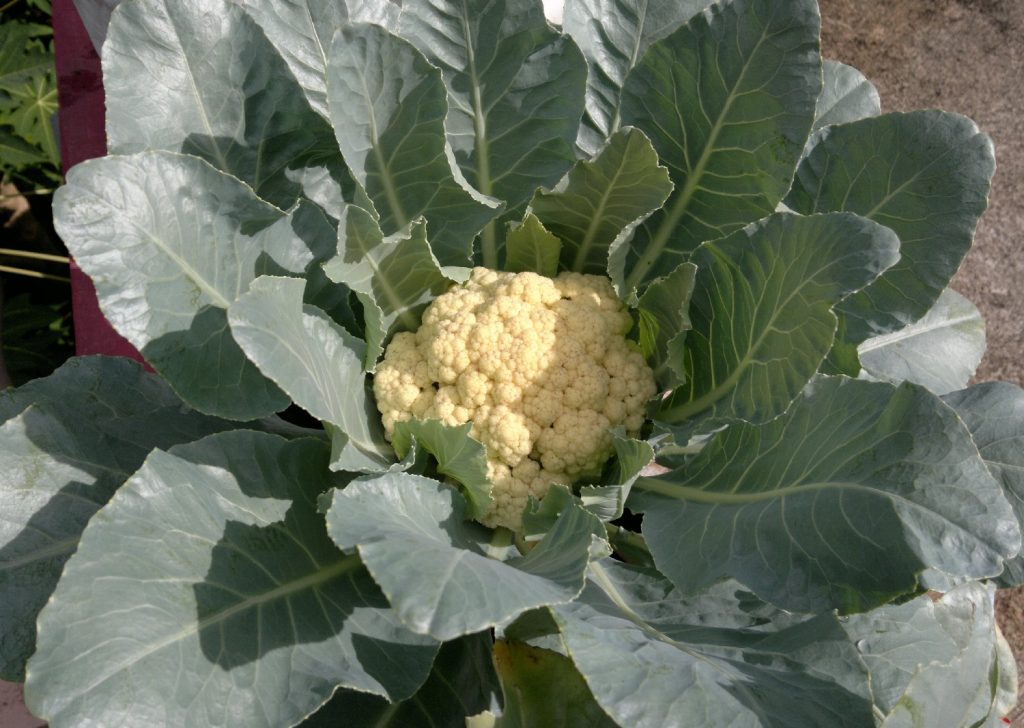
Is cauliflower man-made or did it first occur in nature?
While it’s true that the cauliflowers that we buy from the grocery store are man-made, the backstory is a bit more nuanced. Cauliflower is a species of Brassica oleracea, a member of the Brassicaceae family that also includes broccoli, cabbage, Brussels sprouts, kale, collard greens, and kohlrabi. All of these vegetables originated from wild mustard.
Wild mustard could be found in Europe and the Mediterranean region roughly 2,500 years ago. The plant was originally cultivated to produce larger leaves by the Ancient Romans and Greeks, and the result is the collard greens and kale we know today. But farmers soon discovered that wild mustard was a versatile plant that could be used to produce a variety of vegetables.
In the 1600s, farmers cultivated wild mustard plants to grow bigger leaf buds, and cabbage was born. Over the years, different wild mustard plants were hybridized. Those with small flower heads became Brussels sprouts. Those with large stems became kohlrabi. And the wild mustard plants that produced large flower heads became broccoli and cauliflower.
When was cauliflower developed?
Derived from the Italian word cavolfiore meaning “cabbage flower”, cauliflower dates as far back as the Middle Ages. The earliest cauliflowers were traced to Cyprus, where they were sometimes called “Cyprus colewort”. Cauliflower seeds were extremely popular in Western Europe during the 1700s and were considered a delicacy in France where the vegetable was served in the courts by Louis XIV.
Cauliflower was first grown in North America in the late 1600s. Today, California is the major cauliflower producer in the United States, producing 90 percent of the nation’s cauliflower supply. Cauliflower has been cultivated over the years to produce larger heads and to produce more often to maximize crop yield. Weaker cultivars have been abandoned in favor of cauliflowers that are resistant to pests and diseases, making crops easier for modern farmers to grow and care for.
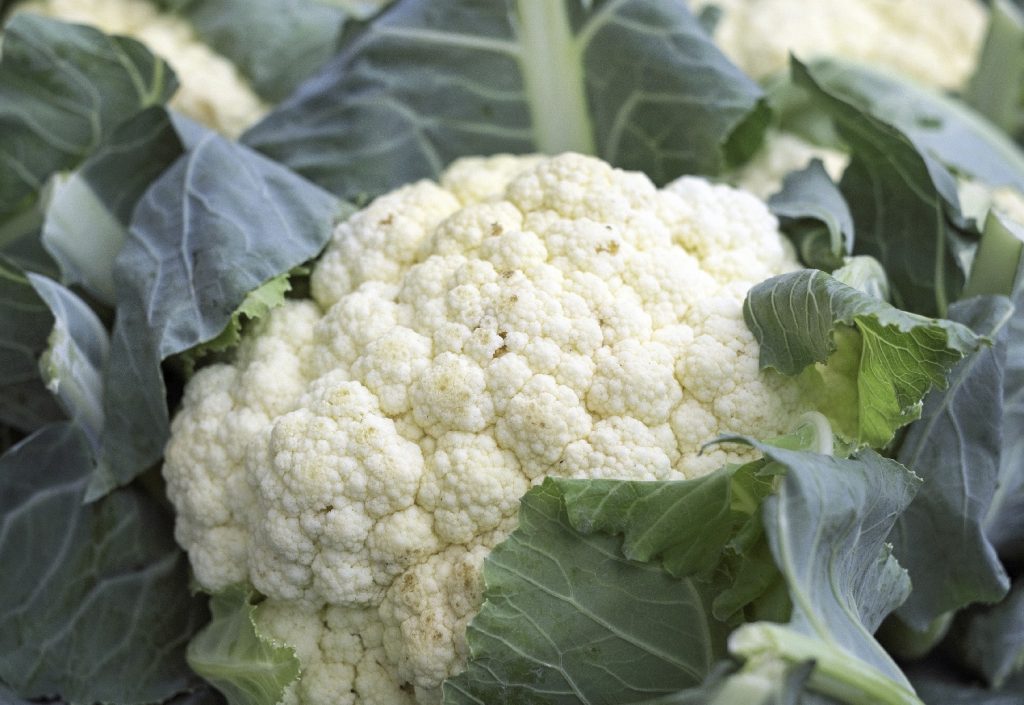
Is cauliflower a genetically modified organism (GMO)?
The answer to this question depends on how you define the term “genetically modified organism”. In the most basic interpretation of the phrase, cauliflowers are genetically modified organisms simply because they have been hybridized by mankind.
Over the years, cauliflowers have been cultivated to produce vegetables that meet certain criteria (to be more disease-resistant, to have a better taste, to produce a higher crop yield, etc.). And a consequence of that is that the cauliflower plant’s genetic material is different now than it was centuries ago.
That said, cauliflowers are not true genetically modified organisms because they have not been genetically engineered in a lab. The modern cauliflowers that we enjoy today are the result of decades of hybridization — an agricultural strategy utilized to produce hardier, more fruitful plants.
So, to put it simply, cauliflowers are the result of careful selective breeding, not the product of mad science experiments. Though modern cauliflowers are not the same as the cauliflowers that were first served a long time ago, they’re also not the “Frankenfoods” we think of when we hear the term “GMO”.
Is cauliflower good for you?
It sure is! Cauliflower is rich in fiber and chock full of beneficial nutrients. It’s an excellent source of vitamin C, with a cup of cauliflower providing 77% of the daily recommended value. It’s also a good source of vitamins K and B6, as well as potassium, manganese, and magnesium.
Cauliflower is a unique vegetable because it’s low in starch, yet can be used like a starchy vegetable in cooking. Riced cauliflower is a low-carb alternative to real rice. A cup of riced cauliflower contains 5.3 grams of carbs, compared to a cup of cooked white rice, which contains a whopping 36.7 grams of carbs.
Mashed cauliflower has a similar texture to mashed potatoes. It’s a viable alternative for anyone watching their blood sugar levels, with mashed cauliflower only containing 8.9 grams of carbs per cup versus the 44.4 grams of carbs in real mashed potatoes. Mashed cauliflower can also be used to make pizza crusts, low-carb brownies, and more.
Cauliflower is incredibly versatile. Whether it’s prepared as a side dish, secreted into desserts, or offered as an alternative to carb-rich grains and vegetables, cauliflower is highly nutritious and a valuable player in a healthy diet.
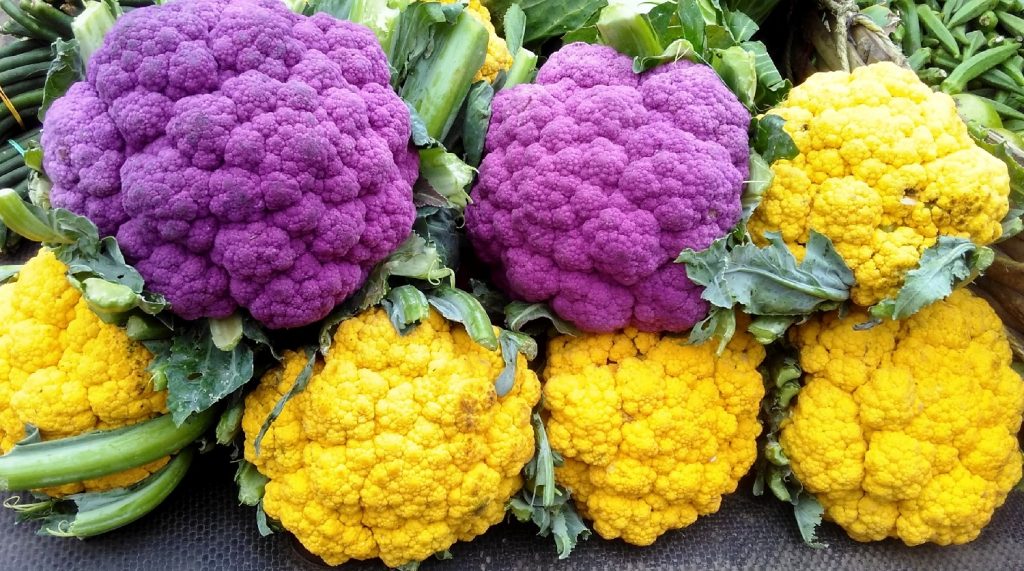
Why is cauliflower white?
Cauliflowers are white because, as they grow, they’re completely covered by their leaves, so they’re sheltered from the sun’s harsh rays. Because they’re not exposed to light as they grow, they lack pigmentation. Some older cultivars of cauliflower need to be blanched, meaning they need to have their leaves tied together at the top to keep the heads out of the sunlight.
Sometimes, especially at farmer’s markets, you’ll see cauliflowers that have a yellow tinge to their tops. These are cauliflowers that stayed out in the field a little too long. The plant’s leaves opened up, exposing the cauliflower’s head to the light, resulting in a bit of yellowing. But, despite their yellow tint, these cauliflowers are just as edible as their whiter counterparts.
Does cauliflower come in different colors?
White cauliflowers are the most readily available, but not all cauliflowers are white, you know. Cauliflower comes in a variety of colors, including purple, green, orange, and yellow. And, what’s more, cauliflowers have different health benefits depending on their color. Let’s take a look at some of the health benefits that these rainbow cauliflowers have to offer.
- Purple cauliflower — These cauliflowers are rich in anthocyanins, the same compound that gives eggplants their deep purple color. Anthocyanins are particularly beneficial for heart health, reducing arterial stiffness and supporting healthy blood pressure.
- Yellow cauliflower — Not to be confused with aged cauliflowers that have developed a slight yellow hue due to sun exposure, true yellow cauliflowers are uniformly yellow, the result of elevated levels of lutein. This naturally-occurring carotenoid improves eye health, decreasing the risk of age-related macular degenerative diseases.
- Orange cauliflower — Beta carotene, the same compound that makes carrots orange, gives orange cauliflowers their color. Beta carotene possesses powerful antioxidant activity, and the body converts it into vitamin A, which is necessary for a healthy immune system.
- Green cauliflower — Sometimes called broccoflower, green cauliflowers are rich in beta carotene, possessing more of this valuable carotenoid than white cauliflower, but less than broccoli. It boasts the same benefits as orange cauliflower.
As with white cauliflowers, these rainbow cauliflowers lose more nutrition the longer they’re cooked, so it’s best to eat them raw. If you prefer to cook them, steam them or saute them lightly. This allows them to retain their valuable vitamins, minerals, and bioflavonoids so you can enjoy their incredible health benefits.
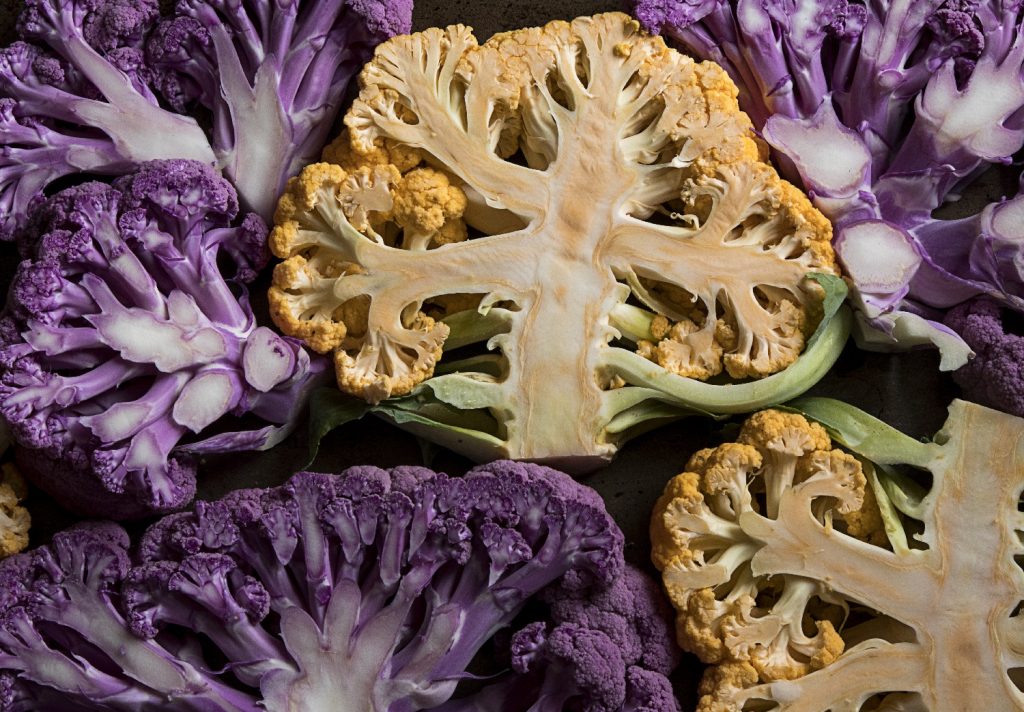
Is cauliflower easy to grow?
Cauliflower is a popular choice for backyard gardeners because it’s so easy to grow. Whether you choose to plant white cauliflowers or rainbow cauliflowers, these veggies all have the same growing requirements.
Cauliflower seeds should be started indoors 6 to 10 weeks before the last frost of the season. Plant seeds in small pots filled with potting soil that has a neutral pH. Seeds should be sown ½ inch deep and placed on a sunny windowsill. Expect to see sprouts 8 to 10 days later. You can move your cauliflower seedlings outside once they develop true leaves.
Your cauliflowers should be planted in full sun in well-drained soil that can be kept moist. Be sure to water them regularly because they must stay hydrated to produce. Cauliflowers are perfect for early spring and late fall gardens because they grow best in cool weather. Use plastic or cut milk jugs to protect cauliflower plants from frosts. Cauliflowers are ready to be harvested 55 to 100 days after planting.
Is homegrown cauliflower better than storebought?
Homegrown cauliflowers, regardless of color, tend to be more nutrient-dense than storebought cauliflowers. Storebought cauliflowers are usually mass-produced, fed fertilizers that promote growth, but not necessarily nutrition. Because many growers prioritize quantity, the quality of these cauliflowers suffers. But homegrown cauliflowers can be grown in much smaller crops, so gardeners can give them with better care and ample nutrition in the form of homemade compost.
Because cauliflowers have shallow root systems, they’re light nutrient users, meaning they won’t deplete the soil of all of its nutrition. And since they mature so quickly, you’ll have plenty of time to grow even more crops in their place once you’ve harvested them. Overall, cauliflower is a low-maintenance crop that matures fairly quickly. Combined with its numerous health benefits, cauliflower definitely deserves a space in your backyard garden.
